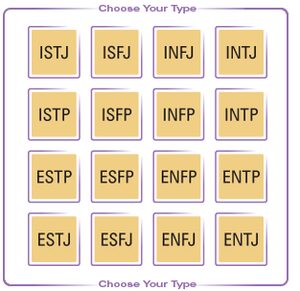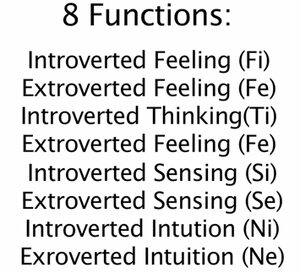Working in groups is a newer concept that is important for the 21st century. Companies, universities and other groups are emphasising on a lot of working in groups. However, people have inherently different personalities. Some are extroverts while the rest are introverts. Each person is different and has his own style of working. While working in groups it can be identified qualitatively through each person’s behaviour how he fits in. However, this is not very accurate. To get an accurate analysis of the person’s personality there is a test called the Myers Briggs Test.
After answering a set of 60 odd questions the person is classified into one group out of the 16 possible outcomes. For the sake of explanation two cases have been highlighted below.
- ‘ENTJ’ where ‘E’ – Extroverted, ‘N’ – Intuitive, T – Thought, ‘J’ – Judging
- ‘ISFP’ where ‘I’ – Introverted, ‘S’ – Sensing, ‘F’ – Feeling, ‘P’ – Prospecting
The brief explanations of each letter is shown below.
- Favourite world: If get you like the outside world more (E) or if you get like the inner world (yourself, your immediate surroundings) more (I).
- Information: You take information as is given and keeping in mind what has been said (S), or read between the lines (N)
- Decisions: When making decisions you choose to make them based off of facts and data (T), or you choose to make them based on other people’s choices and circumstantial.
- Structure: When working your choice is to work according to a plan (J), or you choose to plan according to circumstances and are flexible (P).
The possible outcomes are 16 as shown in the figure below.

Depending on which archetype you fall under jobs, relationships, strengths and weaknesses are explained. So this gives a more objective understanding of yourself.
Beyond this there are 8 functions which are highlighted as well of which any individual will have only 4. And based on the 16 personality archetypes 4 of these ‘8’ functions will be in order of ‘Dominant’, ‘Auxiliary’, ‘Tertiary’ and ‘Inferior’. These are shown in the figure below

- Introverted Feeling: People tend to usually discuss their morals and ideals inwardly
- Extroverted Feeling: People are usually aware of the feelings and the mood around them
- Introverted Thinking: People rationalise internally and think about things before you say it
- Extroverted Thinking: People use charts, diagrams and pictures to explain what they feel.
- Introverted Sensing: People tend to use stored data from the past and make a decision on how things have gone previously.
- Extroverted Sensing: People are aware of the world around them from their 5 senses
- Introverted Intuition: People tap into new ideas and realisation and make predictions based off of what had been done in the past.
- Extroverted Intuition: People interpret situations and pick up on signals and from other people’s emotions.
This test can give a serious understanding of your own personality or of others. A shrewd manager knows how to balance the groups with a mix of many of these individuals. However, the test cannot always be 100% accurate because of human errors while giving the test. The individual may be biased to certain questions etc.
I had taken the test once 2 years ago and then I had taken it again a couple of weeks ago the results and the change is fascinating. My archetype changed from one to another not drastically. Possibly due to a change in surroundings and ideals. So taking this test regularly can show how your character has changed over the past months/years. I would really recommend taking this test.
The link is here: http://www.16personalities.com/
REFERENCES:
- http://www.myersbriggs.org/my-mbti-personality-type/understanding-mbti-type-dynamics/the-eight-function-attitudes.htm
- http://understandmyersbriggs.blogspot.nl/2012/12/the-8-cognitive-functions.html


